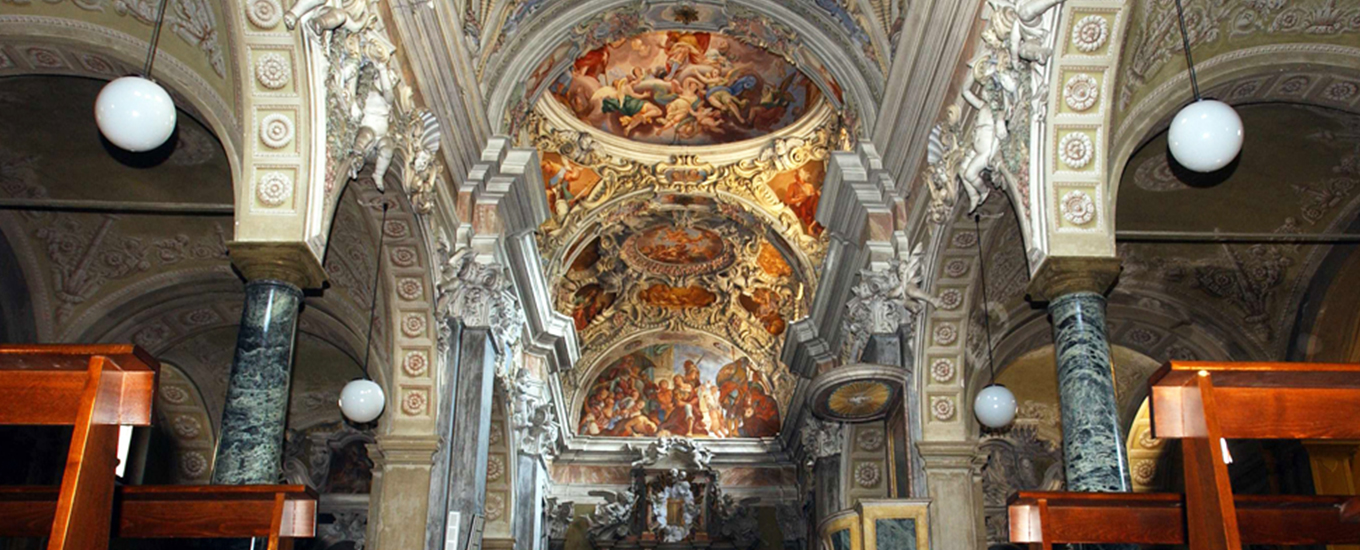The Church of San Carpoforo was first mentioned in a record dated 1148, when the land of Bissone belonged to Milan’s monastery of Sant’Ambrogio. Its origins however are very likely to date back to Lombard times (8th century). The parish of Bissone became independent in 1474, when it broke off from the Pieve of Riva San Vitale, belonging to the Diocese of Como.
History
In the Cinquecento (sixteenth century), the building already displayed a trussed central nave, taller than the lateral ones, and two lateral vaulted naves. Towards the end of the century, and at the start of the Seicento (17th century), some chapels were created out of the lateral naves, adding to the existing one of the baptismal font. In the last few decades of the Seicento, the building was largely restored, ultimately acquiring inside the appearance it has today. The reconstruction was undertaken by some citizens of Bissone, among whom stand out the names of Carpoforo Tencalla, the artist who created the wall paintings in the chancel, and Giovanni Pietro Tencalla, an architect, who funded the execution work. The high altar, was also reworked.
The more recent structural interventions involved the façade, rebuilt after 1730, and subsequently the building of the choir.
The interior of the church features mainly the pictorial decoration and the stucco work of the central nave, executed between 1680 and 1688. and most likely ascribed to Bissone craftsmen connected with Carpoforo Tencalla, with the help of local artists such as the Colomba, Barberini and Carloni families.


